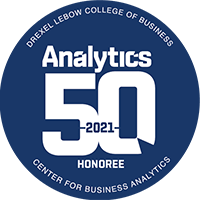“Good data doesn’t have an opinion or a bias but is rooted in facts.”
Industries now rely on a network of sensors and the analytical monitoring services derived from them to operate efficiently, maintain low costs, and develop cutting edge reporting tools that can predict future occurrences.
Sensors have the incredible ability to provide quantitative data that remain unbiased by activities that occur in the past or the future. Unlike qualitative, human-based observations, sensors, and actuators can build accurate, reliable data points and sense the smallest most granular fluctuations in their environment.
Perhaps most interesting is the ability of sensors to impartially observe irregularities, communicate that data to machine learning software which can then autonomously determine possible problems. Operating through this system allows for greater accuracy, earlier detection, and improved monitoring oversight. They can warn of potential problems before they become big problems, allow businesses to routinely analyze past trends, perform preventative and predictive maintenance, root out the cause of specific changes, and avoid costly downtime.
Sensors can mimic the five human senses and much more:
Sight: Autofocus, CMOS Image, Microbolometers, Micromirrors
Smell: Gas Sensors
Sound: Microphones
Touch: Force & Touch, Pressure Sensors
Taste: Humidity Sensors
Taking the Data to the Next Level
Sensors give the raw data for a specific aspect of the item that it is monitoring, such as temperature, vibration, speed, pressure, etc. With each sensor relaying information to an acquisition unit, raw data can be instantly uploaded to a cloud-based system. The real power is in the use of data analytics techniques with the raw data to build a picture of the overall health of the item.
Freya Systems has developed solutions in the defense, aviation, and rail industries, interpreting sensor data to create models to solve a variety of performance issues. When a military aviation contractor was facing poor helicopter maintenance turnaround times and data collection methods, Freya used onboard sensors to develop reporting software that displayed key insights on aircraft health for end users. The aviation contractor could now utilize a software toolkit that interpreted and visualized data to prevent unnecessary maintenance and downtime costs. Take a look at the full Reduced Rotor Vibration Case Study.
As sensors evolve, a new era of digital integration is emerging. Called Industry 4.0, this innovation has been primarily spurred by the Internet of Things (IoT), giving machine-to-machine communication and insights never previously thought possible. It is the interaction between a network of sensors with internet connectivity and the services it enables. The IoT brings the use of sensors to the next level by allowing for the development of more innovative data services with a greater variety of applications.

The other aspect of sensors, often overlooked, is how to present the data. Key information should be “bubbled to the top,” allowing the user to rapidly determine where they should focus effort and resources.
Freya recognizes that decision-making takes energy and focus, so we work to minimize the workload by maximizing ease-of-use. By fusing data and software, Freya tools enable key experts and managers to prioritize certain information, freeing up their time to do what they do best.
“Without data, you’re just a person with an opinion.” – W. Edwards Deming
Learn more about how Freya Systems can help you unpack the potential of your data today. Contact us today.




